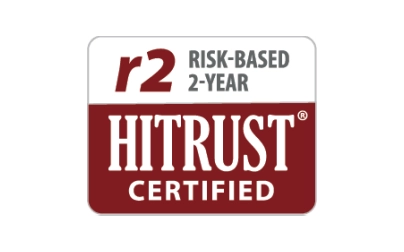
Choosing Medicare coverage is a high-stakes game for older Americans right now. With inflation battering retirees’ budgets, those aging into Medicare eligibility might be even more discerning about what they’ll actually get from a plan for the cost. Is it a 5-Star plan? Is the member service excellent? The answers to these questions are going to be just as crucial to payers in the coming year.
The Centers for Medicare and Medicaid Services (CMS) changed the formula for Star Ratings for 2023, doubling the impact of CAHPS survey results, patient experience, and complaints measures. These changes will give member experience four times the weight over previous years and will have the most impact on a plan’s overall Star rating. CMS estimates a $3.65 billion reduction in reimbursement to payers in the next decade based on the revised formula — so consequences will abound for plans with lower Star ratings or those whose ratings drop thanks to the new methodology.
With member experience now mission-critical for payers, what can they do? We’re sharing insights from Bo Young, Carenet Health’s vice president of customer experience analytics: “It’s about people first, then investing in the right technology and solutions.”
Carenet’s CX Analytics Group creates patient experience and service journey insights for clients through statistical sampling and calibrated human observations. By listening and reviewing a smart sample of member calls and text chats during a 30-day period, they’re able to create data sets that can help payers invest in the right technology and implement process updates to improve net promoter scores and customer satisfaction scores, which can ultimately impact Star ratings.
You might ask, “Can I really learn that much from 200 phone calls to improve CAHPS results?” Let’s walk through why human observation is a key tool for making improvements to earn the coveted 5-Star rating.
Knowing your service journey is crucial to understand the total member journey
A member journey begins when a healthcare consumer chooses a Medicare Advantage or Part D plan. But much like a good play or TV show, the service journey begins with an inciting incident. Whether it’s tripping on a rug and breaking a wrist or getting a Type II diabetes diagnosis, there will be an event that causes a member to reach out and begin a service journey. You can’t build out your customer journey or make adjustments until you take stock of what your members currently go through before, during, and after engaging with your service agents.
Aiming for a frictionless experience—instead of an effortless one–is the goal
Aiming for an effortless experience for members is a high ideal we all wish we could live up to. But it’s likely more realistic (and achievable!) to aim for a frictionless experience. The CX Analytics Group measures points of effort and points of friction throughout the member service journey.
Think about it: Let’s say your internet goes out. You do some troubleshooting. That’s a workstream. You can’t get it to work, so you call your service provider and talk to an agent. That’s a workstream. The agent talks to another agent—that’s a workstream. The agent inputs info into a database—that’s a workstream. And then finally, a truck rolls up to your house—yep, another workstream. These workstreams don’t talk to each other—and that’s a problem.
Listening in to recorded member service allows you to understand what’s going on with your service. You learn what incites members to call, and any troubleshooting or steps they take before calling. Are your service agents having to complete a myriad of copying and pasting tasks to get through a process, causing dead air during calls? And then, what happens for the members after the phone call ends? Was the issue truly resolved from their perspective?
There will always be effort in the journey—it’s about making it as easy as it can possibly be.
‘First call resolution’ should be ‘first contact resolution’
Member experience should be about meeting members at their moment of need, at their channel of choice. But it’s often difficult to know what channel of choice they need because members might not know themselves.
Resolution for some companies may mean that a service agent did everything they were supposed to do and answered the question. But what about the member? There may be follow-up steps for the member to take to actually resolve the issue. There’s no way for the service agent to know if they actually completed that task.
The calibrated listening by the CX Analytics Group is centered in the member’s perspective. By fully understanding what members go through before, during and after a member service interaction, you can improve processes through automation, process flow improvements, training and coaching opportunities, and more.
When was the last time you thoroughly reviewed your member service journey? Before investing in band-aid solutions, we suggest understanding your service journey through human observations first. It might help you save money in the long run and get your health plan to 5 Stars.
“Don’t forget the human,” Young said. “Everything we do is from the patient’s perspective, from the member’s perspective, from the provider’s perspective. And that’s what unique.”
—
ABOUT CARENET HEALTH
If you’d like to talk more about advocacy and navigation programs and how they can address network leakage and improve Star ratings, contact us today. We’re happy to schedule a conversation and share our insights from working with more than 100 of the nation’s most consumer-centric health plans.


